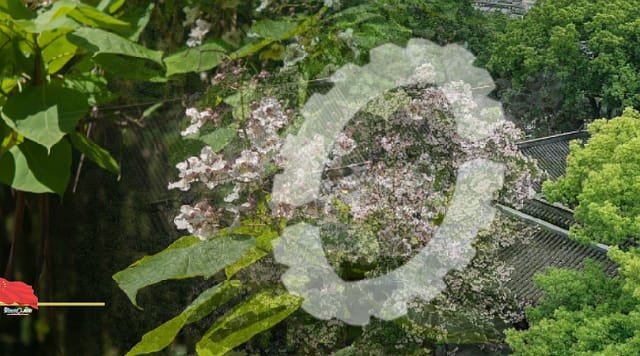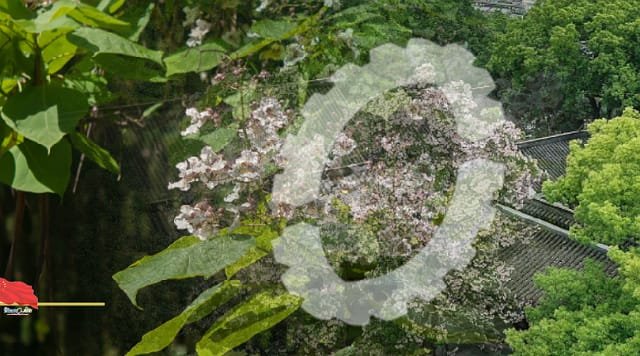Two ancient Manchurian catalpa trees are now in full blossom at Dongyue Temple in Hangzhou City, east China’s Zhejiang Province. The pink flowers look like sunset clouds enveloping the temple.

The trees were said to be 530 years old in 2018, making them 534 today. The Manchurian catalpa tree is native to China and is deemed “the king of a hundred trees.” It is often used as an ornamental tree.
Chinese Catalpa is a small deciduous tree native to China’s forests. It self-seeds easily and has naturalized in some areas of the U.S.A. In its mature form it can be an attractive rounded shade tree but it often grows out of shape and its large leaves can become damaged as the growing season progresses making them less attractive. It is an ideal tree for that tricky low wet spot or an area with poor soils. It prefers moist loamy soil high in organic matter and full sun to partial shade.
Insects, Diseases, and Other Plant Problems: No serious problems. Catalpa sphinx moth caterpillars can do significant damage. Mildew, twig blight, verticillium wilt, and leaf spots are occasional problems. Leaves can become damaged and look ratty from wind or hail.
Chinese catalpa is a pod-bearing tree native to China. Compared to C. speciosa, it is much smaller, typically reaching heights between 20 and 30 feet (6 and 9 m). The inflorescences form 4–10-inch-long (100–250 mm) bunches of creamy white flowers with distinctly yellow tinging; individual flowers are about 1 inch (25 mm) wide. They bloom in July and August The leaves are very similar in shape to those of Paulownia tomentosa, having three lobes (two are abruptly truncated on either edge, with a third, central, slightly acute, pointed lobe forming the leaf apex), and are darkly green. Fruits are very narrow, foot-long pods
Although native to the more temperate provinces within China (Anhui, Gansu, Hebei, Heilongjiang, Henan, Hubei, Jiangsu, Jilin, Liaoning, Nei Monggol, Ningxia, Qinghai, Shaanxi, Shandong, Shanxi, Sichuan, Xinjiang C. ovata is also cultivated in North America and Europe, and has become a parent of Catalpa × erubescens with the American species Catalpa bignonioides It is commonly used to make the undersides of qin
Source: This news is originally published by cgtn
